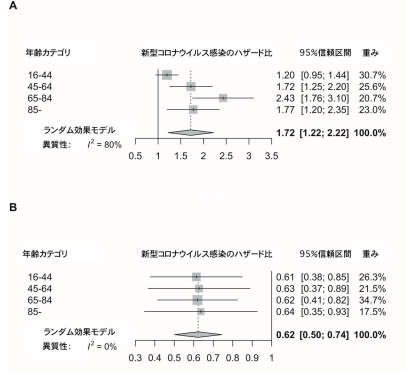2022-09-20 スイス連邦工科大学ローザンヌ校(EPFL)
新しい研究では、ヒトの小さな集団の遺伝子変異に類似したマウスの「遺伝子参照集団」(BXDs)を用いて、胆汁酸の恒常性に関する新しい知見を得ることに成功した。研究チームは、環境変化(高脂肪食摂取)、「オミックス」データ、バイオインフォマティクス、分子生物学的解析を組み合わせることにより、胆汁酸の遺伝子および環境の決定要因を数百個マッピングし、それらが健康および疾病に与える影響を明らかにした。
普通食または高脂肪食を与えた36匹のBXDマウス系統の肝臓、便、血漿(それぞれ胆汁酸の合成、代謝、シグナル伝達の主要組織)中の胆汁酸の存在量と組成を測定した結果、胆汁酸濃度は食事の影響を強く受けていることがわかった。
胆汁酸は代謝性疾患において重要な役割を担っており、体重、脂肪量、グルコース、インスリンレベルなどの生理学的形質と強い相関があることが確認された。
研究者らは、バイオインフォマティクスとシステム遺伝学のアプローチにより、カルボキシルエステラーゼ1C(CES1C)をタウロ・ウルソデオキシコール酸(TUDCA)血漿レベルの新規調節因子として同定し、さらにin vivo欠損機能モデルマウスを用いてその役割を検証した。
このアプローチにより、CES1CをTUDCA血漿レベルの調節因子として同定し、遺伝子、胆汁酸、表現型の間の他の多くの関連性を発見することができた。
<関連情報>
- https://actu.epfl.ch/news/genetics-and-diet-influence-bile-acid-homeostasi-3/
- https://www.sciencedirect.com/science/article/pii/S1550413122003588
I統合的システム解析による胆汁酸のホメオスタシスの遺伝的および食事的モジュレーターの同定 ntegrative systems analysis identifies genetic and dietary modulators of bile acid homeostasis
Hao Li,Alessia Perino,Qingyao Huang,Giacomo V.G.Von Alvensleben,Amir Banaei-Esfahani,Laura A.Velazquez-Villegas,Karim Gariani,Melanie Korbelius,Maroun Bou Sleiman,Jéromine Imbach,YuSun,Xiaoxu Li,Alexis Bachmann,Ludger J.E.Goeminne,Hector Gallart-Ayala,Evan G.Williams,Julijana Ivanisevic,Johan Auwerx,Kristina Schoonjans
Cell Metabolism Published: September 12, 2022
DOI:https://doi.org/10.1016/j.cmet.2022.08.015

Highlights
- •Multi-omics data and bile acid profiles were collected from ∼360 male BXD mice
- •Bile acid levels are strongly influenced by genetics and environment
- •Numerous genetic loci associate to bile acid abundance
- •CES1C is identified as a modulator for tauroursodeoxycholic acid plasma abundance
Summary
Bile acids (BAs) are complex and incompletely understood enterohepatic-derived hormones that control whole-body metabolism. Here, we profiled postprandial BAs in the liver, feces, and plasma of 360 chow- or high-fat-diet-fed BXD male mice and demonstrated that both genetics and diet strongly influence BA abundance, composition, and correlation with metabolic traits. Through an integrated systems approach, we mapped hundreds of quantitative trait loci that modulate BAs and identified both known and unknown regulators of BA homeostasis. In particular, we discovered carboxylesterase 1c (Ces1c) as a genetic determinant of plasma tauroursodeoxycholic acid (TUDCA), a BA species with established disease-preventing actions. The association between Ces1c and plasma TUDCA was validated using data from independent mouse cohorts and a Ces1c knockout mouse model. Collectively, our data are a unique resource to dissect the physiological importance of BAs as determinants of metabolic traits, as underscored by the identification of CES1C as a master regulator of plasma TUDCA levels.


